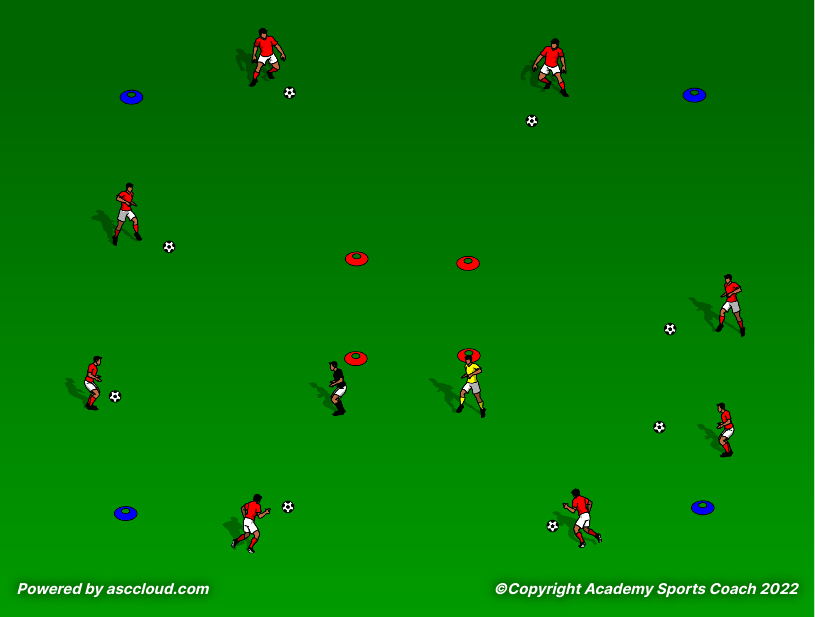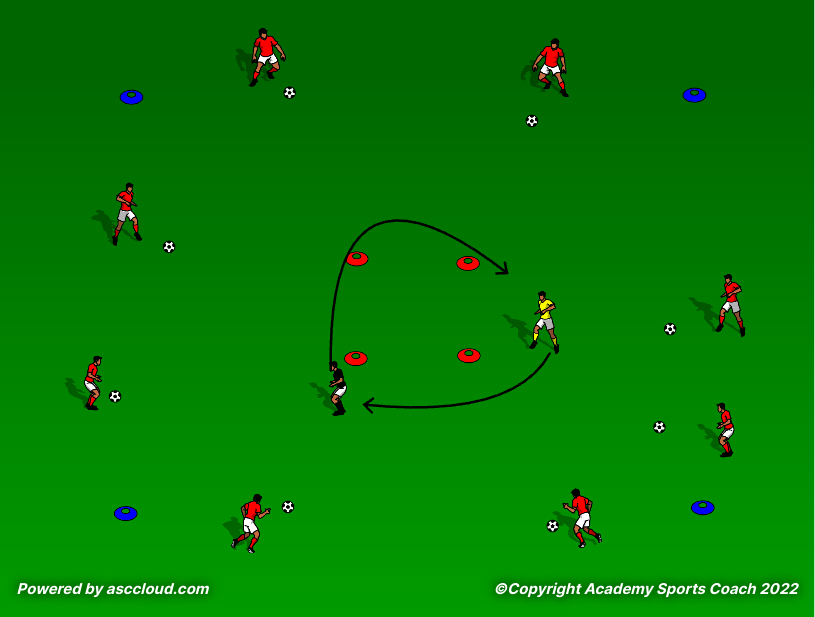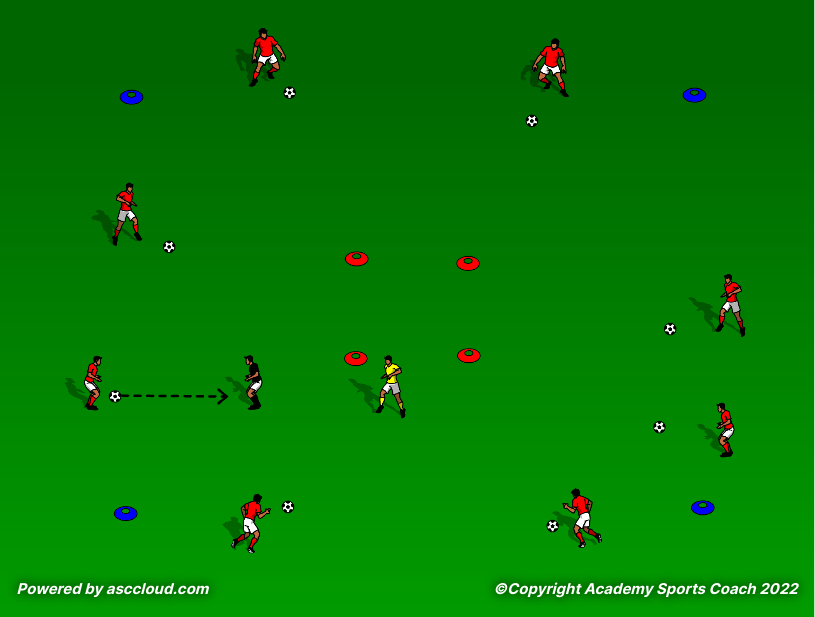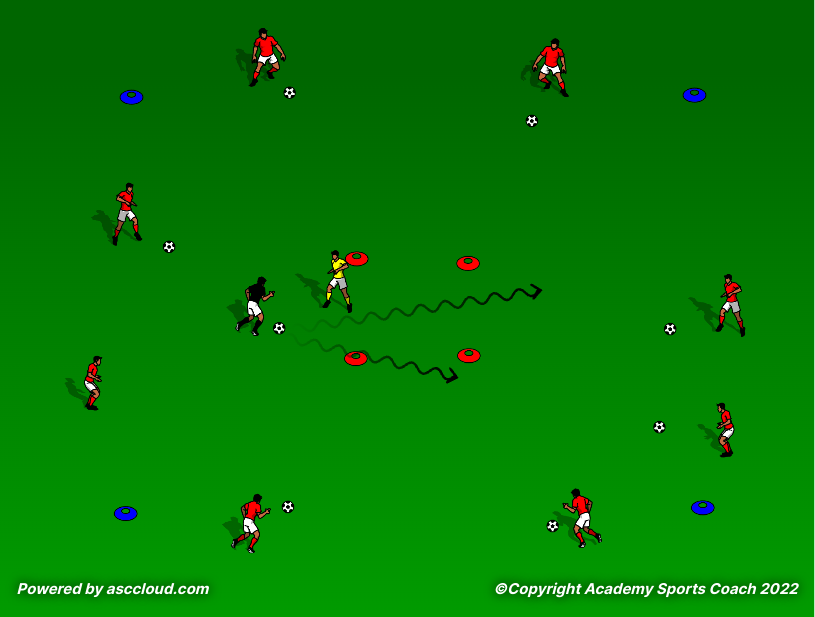By Matt Carroll -
In a number of 1v1 scenarios, many drills focus on players squaring off face to face either off the dribble, or reacting to a pass from the opposing defender. We do these things because they create a 1v1 head to head scenario that looks clean, is effective, and is easily replicable, but it doesn’t always simulate the game situations our players generally meet. 1v1s are messy, complicated, and contextual. Players may find themselves in a 1v1 situation when receiving with their backs turned, from the side, from a 2v2 that becomes a 2v1 then a 1v1, the may find themselves there after taking a ball down out of the air. Realizing this, the 1v1 fishbowl attempts to recreate this fluidity in context by varying how and when players receive their initial pass to go 1v1.
To set up the 1v1 fishbowl you will have a square grid set up that can accommodate all but two of your players. Next in the middle create a smaller square, about 10ft by 10ft. Two players are placed in the middle, one defender and one attack. Every player on the outside is evenly spaced out and has a ball.


To begin play the coach initiates the start of the drill and the attacking player begins to run around the middle grid with the defender in pursuit. The attacker can go either direction, stop and start, as long as they stay on the edge of the grid. The coach then calls out the name of a player on the grid and that player passes to the attacker. The attacker receives the pass and can score in 1 of 2 ways.

If they dribble straight through the middle grid they receive 2 points, if they enter the grid and exit from one of the sides they score 1 point, if the defender wins the ball they get nothing. The play then resets with the passer becoming the defender, the defender becomes the attacker, and the attacker moves outside to become a passer.

Ways to modify this drill even further is creating different verbal and visual cues for who is the passer. It could be players are color coded, to increase the cognitive difficulty of finding the next pass, it could be a sequence of passes where the player then needs to set themself up to receive from the final passer, or any other type of additional recognition step. The service can also vary, initially players should receive from a pass but this can be changed to receiving from a bounce, an aerial all, a back and through etc.
By Matt Carroll -


